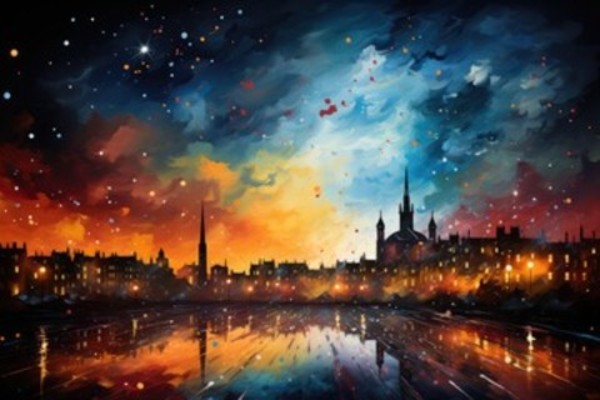The Heart of Winter: Exploring Scotland's Seasonal Customs
4 min read

Winter celebrations in Scotland are rich in tradition and have evolved over time, blending ancient customs with modern festivities. Here are some key aspects of how winter is celebrated in Scotland:
1. Hogmanay (New Year's Eve): Perhaps the most famous Scottish winter celebration is Hogmanay, marking the arrival of the New Year. It's a more significant event in Scotland than Christmas was historically. The festivities include firework displays, torchlight processions, and the singing of Auld Lang Syne, a Scots-language poem written by Robert Burns. The tradition of first-footing is also a crucial part of Hogmanay, where the first person to enter a home after midnight brings gifts like whisky or shortbread, symbolising good luck for the year.
2. St. Andrew's Day (30th November): While not in the deep winter, St. Andrew's Day marks the beginning of Scotland's winter festival season. It’s a celebration of Scottish culture with traditional food, music, and dance.
3. Christmas (25th December): Traditionally, Christmas was not widely celebrated in Scotland due to the Protestant Reformation's influence. However, in recent times, it has become more prevalent, with typical celebrations including decorating Christmas trees, exchanging gifts, and special church services. Christmas dinners often feature roast turkey, although some might stick to traditional Scottish dishes.
4. Burns Night (25th January): Burns Night isn’t a traditional winter festival but is deeply ingrained in Scottish culture. It celebrates the birthday of Robert Burns, Scotland's most famous poet. Celebrations include suppers with haggis, recitations of Burns' poetry, and Scottish music.
5. Up Helly Aa (January): This is a fire festival held in Shetland, marking the end of the Yule season. It involves a series of marches and visitations, culminating in a torch-lit procession and the burning of a Viking longship or galley.
6. The Feast of Saint Lucy (13th December): Although more common in Scandinavian countries, some Scottish communities, especially those with Nordic heritage like in Shetland, may observe St. Lucy's Day, celebrating the bringer of light during the dark winter months.
7. Winter Solstice Celebrations: Some in Scotland observe the winter solstice, the shortest day of the year, with ancient traditions and rituals that date back to the Pagan times. This might include special gatherings at standing stones and ancient sites.
8. Celtic and Pagan Traditions: Some ancient traditions like the burning of the Clavie (a barrel of tar set on fire) in Burghead, Moray, continue to be observed. These are remnants of Pagan customs that were once widespread in Scotland.
These celebrations reflect Scotland's rich cultural heritage, blending ancient Celtic and Norse traditions with more modern Christian and secular practices. Winter in Scotland is not just about the cold and dark; it's a time of warmth, community, and festivity.